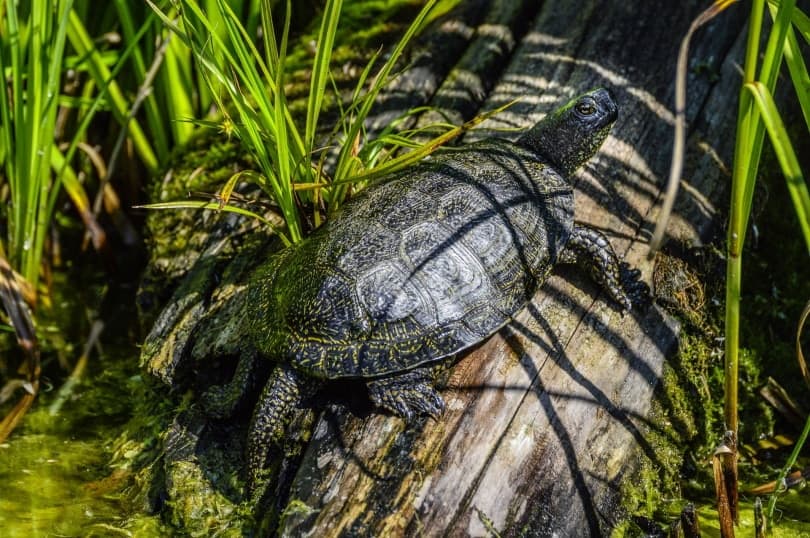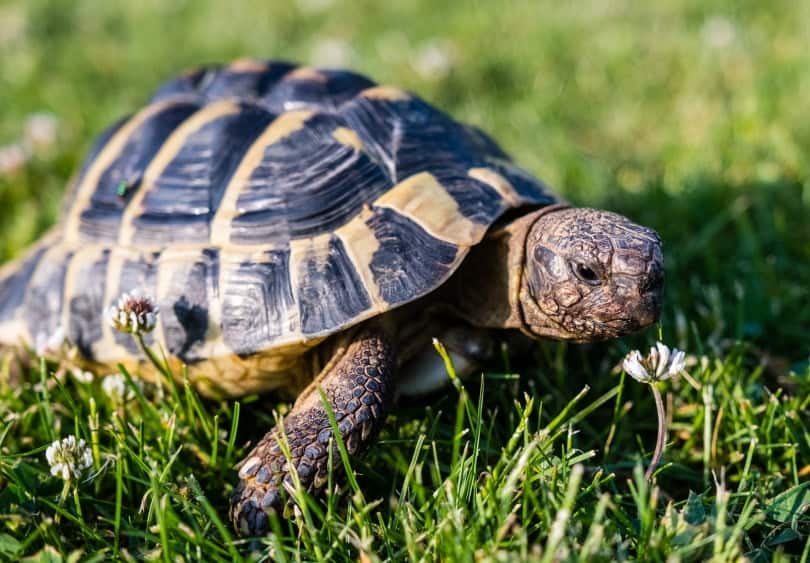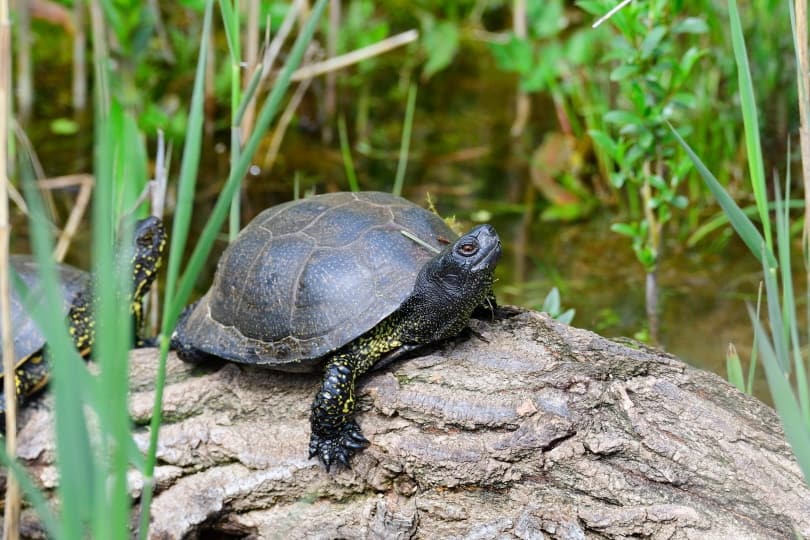Germany has a diverse ecological system that is home to a multitude of animal species. Its towering mountains, clear lakes, and wild countryside provide habitat for a wide range of animals.
However, this European nation is only home to a single breed of turtle, although this is the European pond turtle, which is considered very rare. There have also been reports of a population of alligator snapping turtles in one Bavarian lake. However, these are not indigenous animals; they have bred from a small number of turtles released by private owners, and steps have been taken to try to eliminate the invasive species.
Read on to find out more about the population of turtles in Germany.

The 1 Turtle Species Found in Germany
European Pond Turtle

| Species: | Emys orbicularis |
| Longevity: | 100 years |
| Good to own as a pet?: | Reasonable |
| Legal to own?: | Yes |
| Adult size: | 12-40cm |
| Diet: | Omnivore |
The European pond turtle is an aquatic turtle that lives in slow-moving and still waters. It is an omnivore, eating small fish, worms, and a range of aquatic plants. The species lives approximately 100 years and, including the unusually long tail, it can grow to an adult size of 40cm.
The species is predated by birds, racoons, martens, and, unfortunately, by humans for introducing to the wild animal and the pet trade. The species is considered threatened and close to extinction. In many jurisdictions, the European pond turtle is protected and while it might be legal to own a captive-bred example, it is usually illegal to own one that was caught in the wild.
As a pet, E orbicularis can be quite tame, but it will benefit from being given plenty of time in an outdoor water source such as a pond or a purpose-built feature.
What Is the Difference Between a Turtle and a Tortoise?
Turtles are reptiles that belong to the Testudines order. They have a hard shell that is used as a shield to their body. Tortoises are, in fact, a type of turtle that exclusively lives on land. If a turtle lives in or is partially aquatic, then it is not considered a species of tortoise. As such, all tortoises are turtles, although not all turtles are tortoises.

Do Tortoises Live in Germany?
There are no indigenous species of land-dwelling turtle, or tortoise, living in Germany. The European pond turtle is the only species of turtle in the nation.
Are There Snapping Turtles in Germany?
While the European pond turtle is the only species of turtle indigenous to Germany, there is a known population of snapping turtles found in one particular lake in Bavaria. In 2013, a young boy was attacked by a snapping turtle at the Oggenrieder Weiher in Bavaria. Although the lake was drained and the turtle was hunted, it was never found. Some estimates suggest that there might be a population of more than 100 alligator snapping turtles in the lake.
Alligator snapping turtles have spiky shells and, although they don’t have teeth, they do have a hard beak that enables them to “bite”. If the turtle feels threatened it may attack a person and bite, although this is rare and usually only happen when the turtle is on dry land where it does not feel as confident. The snapping turtle is indigenous to North America and is one of the heaviest freshwater turtles in the world.

What Is the Lifespan of Turtles?
The exact lifespan of a turtle depends on its species, but most turtles will live approximately 80 years.
The pancake tortoise has one of the shortest lifespans of any turtle species and will live approximately 30 years.
At the other end of the lifespan spectrum is the giant tortoise. These 1,000-pound turtles can live more than 200 years and it is widely believed that some wild examples of the species live longer than 300 years.
The snapping turtle has a life expectancy of about 40 years, the European pond turtle 100 years, and the box turtle, which is widely considered to be the most common of all turtles in the US, has a life expectancy of around 30 years in captivity.
Has A Turtle Ever Killed A Human?
There have been no recorded deaths caused by turtles, although there have been instances of bites and scratches caused by these creatures.
Modern turtles do not have any teeth, although they do have hard beaks that they use to tear food apart. Some species, like the snapping turtle, may use their hard beak to bite people as a means of defense or if they feel threatened, and they certainly have the power to take a finger or toe, but attacks are rare and serious injury even rarer. 200 million-year-old remains of turtles show that these early ancestors did have razor-sharp teeth to help them hunt.
Although there are no known instances of a turtle killing a person directly, it is reported that the Greek playwright, Aeschylus, was killed when a tortoise was dropped by an eagle and it landed on his head. It is also reported that Aeschylus had been outside because he was avoiding spending time indoors following a prophecy that he would be killed by a falling object.
- Related Read: Are Snapping Turtles Dangerous? What You Need to Know!

Conclusion
Turtles, which include tortoises and terrapins, are found around the world. They are highly adaptive and live in every continent except Antarctica, but the majority of turtle species are found in North America and South Asia. They are less common in Europe and the only species that is indigenous to Germany is the European pond turtle.
A population of snapping turtles is believed to live in a lake in Bavaria but experts believe that these have been bred from pet snapping turtles left behind by former owners.
Featured Image Credit: Karin Jaehne, Shutterstock
